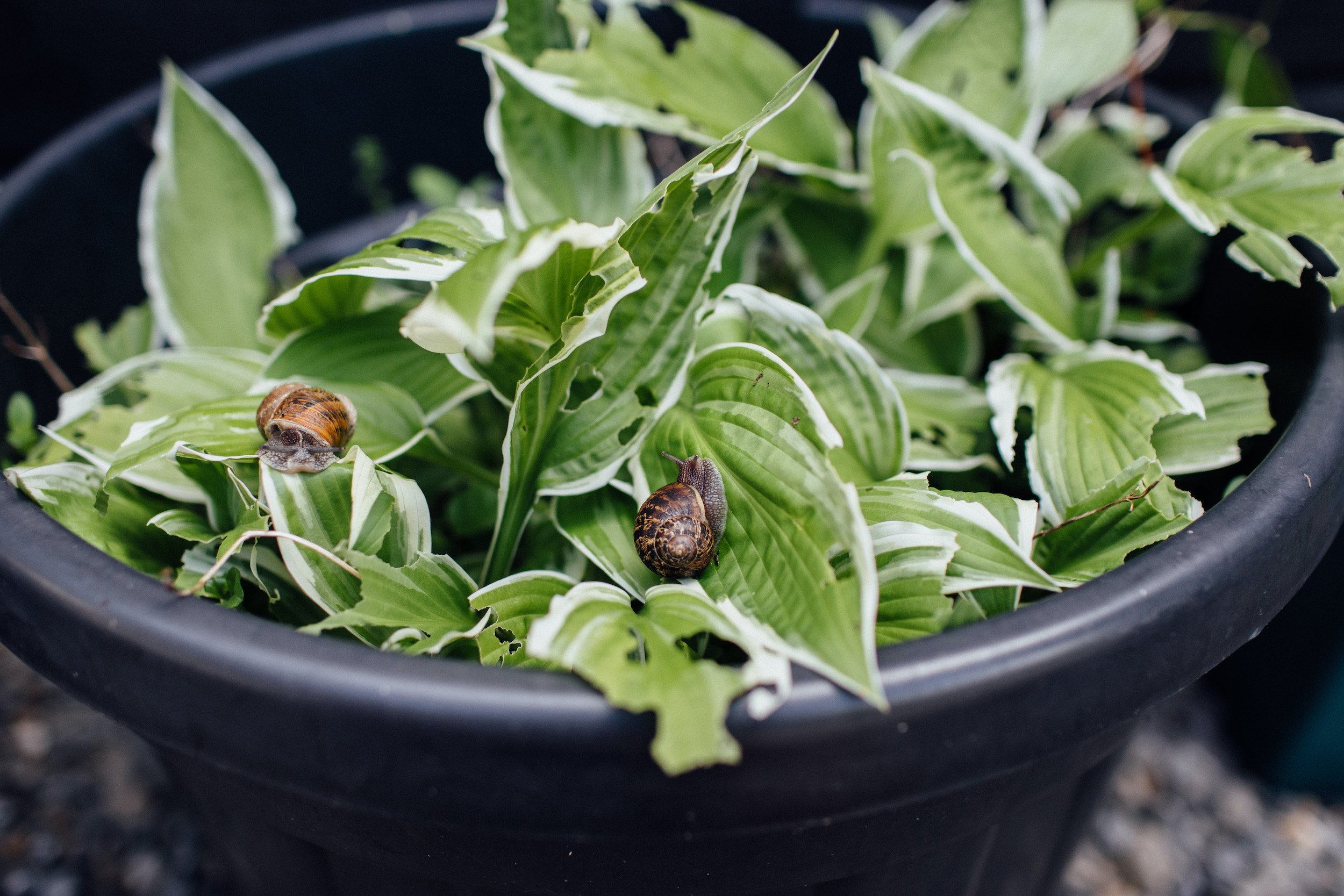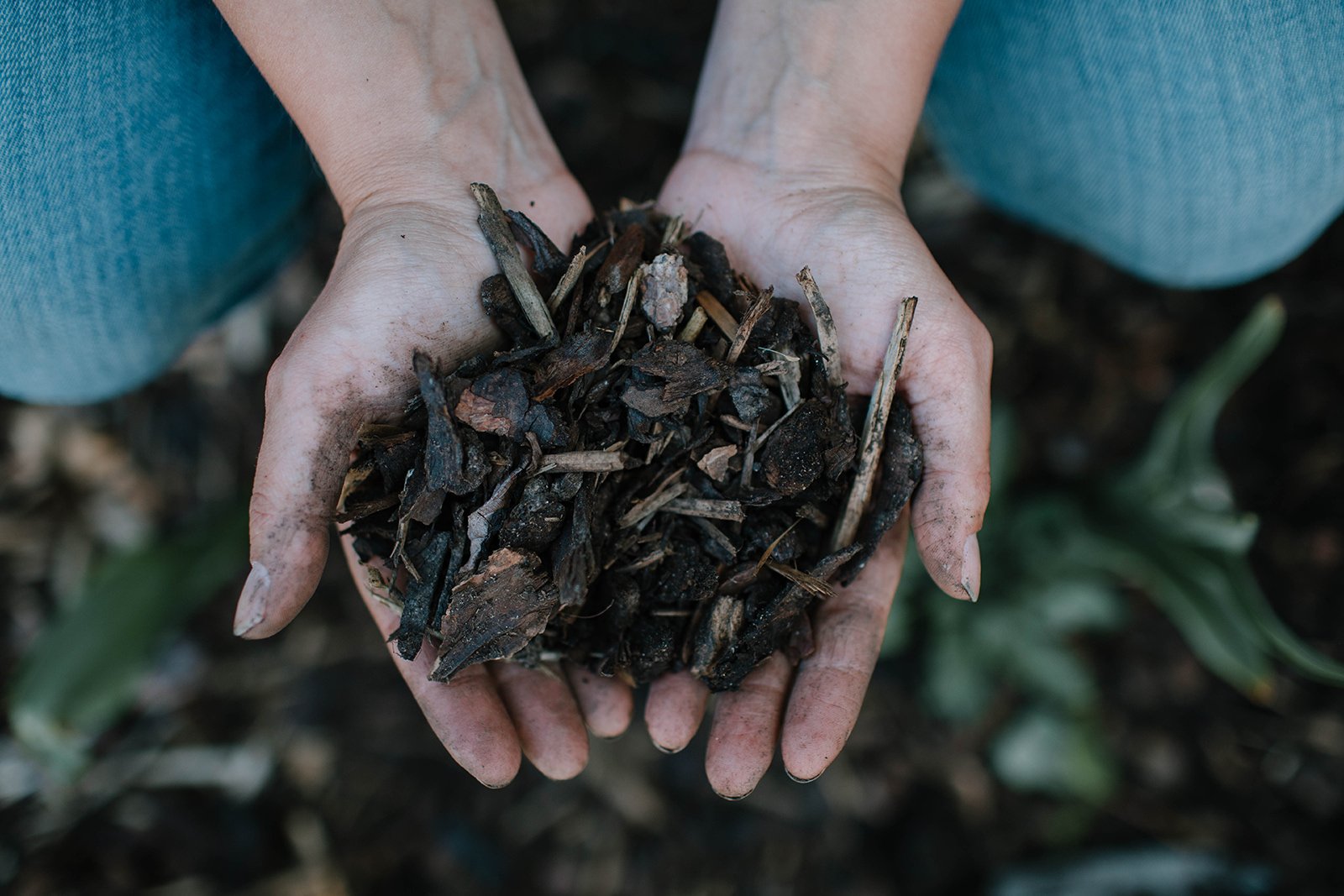How to protect plants from slugs and snails
We are big fans of encouraging wildlife into the garden, however, there’s no denying that some of the wildlife in the garden can be detrimental to the health of our plants! There is nothing more annoying than finding that a beloved and well cared for plant has suddenly been destroyed overnight by slugs and snails, nothing left in its place but a few stringy bits of leaf skeleton and a trail of slime…
Wherever possible, we try to control the slugs and snails using natural methods. Here are our top tips for saving plants from their slimy jaws…
Plant snail and slug resistant plants
This might seem like an obvious solution, but if you have a real problem with slugs and snails in your garden, then it might be best to simply avoid plants they like. For example, if your garden is damp and shady, and a magnet for gastropods, then avoid hostas (always a popular food for snails, see the picture on the right!) and opt for foxgloves and ferns instead.
Many plants are slug and snail resistant, either because their leaves are toxic, taste bitter or are covered in hair.
Take a look at some of our favourite slug and snail resistant plants.
2. Night time slug and snail hunts
This is one of the most environmentally-friendly methods to deter slugs and snails from eating your plants, but, fair warning: it is also one of the most time consuming!
Slugs and snails mostly come out at nighttime, especially on rainy or damp evenings. If you head out with a torch on a night they’re likely to be out and about, you can simply collect them all into a bucket and then deliver them to a nearby park to find a new home. No dead wildlife, no eaten plants.
However, do be prepared to repeat your hunt frequently, as there will always be more creatures ready to come out, and do make sure to take them a fair distance from your house. Snails will happily travel up to 20m to return to their home, so you can’t just chuck them into the neighbour’s garden and hope you’re finished with them!
You can also leave out a place for the slugs and snails to gather — such as an old wet log or a pile of leaves — where the gastropods will head during the night, and you can then pick them off in the morning.
3. Copper rings / copper tape
Slugs and snails don’t like to slide over copper, so a copper barrier can make them turn back from their journey to a plant feast. For plants growing in the ground, a copper ring around the stem of the plant prevents the slug reaching it. These are sturdy, long-lasting and really effective, however they’re relatively expensive, with costs starting from around £15 for six rings, so if you’re planning to protect a lot of plants, this can quicky get pricey! They also tend to work better on smaller plants – once the plant grows bigger, its leaves can often flop back to the ground outside the copper ring, giving the slug a new route back onto its favourite food… They’re great for a few, small very special plants, but not a hugely practical choice for large numbers of bigger plants.
Cheaper is copper tape, almost like a copper covered version of Sellotape. You wrap it around the top of a pot, and again it acts as a barrier from the slug or snail reaching the plant. You can cover quite a few pots with one roll of tape, so it’s much cheaper than a copper ring, however, we have found it can be a bit less effective as well, especially over time. Again, you need to make sure that the leaves or stems of the plant aren’t arching out and touching the ground (or a wall) elsewhere, or the slugs can just climb on that way instead…
4. Soil barriers
Another way of protecting plants is to cover the soil around them with a substance that snails and slugs don’t like to cross. This could either be something sharp and spiky (eggshells or sharp gravel, for example) or something with a difficult texture for gastropods (soot or wool are both frequently used).
We’ve found relative success with this method — as long as there is a thick layer at all times, it can be a great deterrent, however you do need to reapply frequently.
Again, make sure that leaves or stems of the plant aren’t touching the soil elsewhere.
There are plenty of readymade soil barriers that you can buy: Shell on Earth, for example, crush recycled whelk shells, that you can use as a soil topping in pots, or on the ground. Or wool pellets are easily available from garden centres. You can also make your own barriers, by crushing up eggshells (perhaps perfect for chicken owners only!) or re-using other garden debris, such as rose thorns, to create unpleasant surfaces.
5. Nematodes
Nematodes are tiny worm-like creatures invisible to the naked eye. There are a huge range of different nematodes, some of which are parasitic to slugs. They invade the slugs’ bodies, eat them from the inside out and then move on to find another host slug. Completely gruesome to describe, but actually invisible to the naked eye. Because they are parasitic only to slugs, they cause no harm to any other animals and aren’t toxic to the soil or plants (or any pets or children.)
Nematodes have become an increasingly popular method of slug deterrent. You can buy them online, they arrive in the post and then need to be kept in their box in the fridge until you’re ready to use them.
To apply, you mix the paste with water – in a watering can is fine – and pour it onto your beds when the weather and light conditions are appropriate. (Above 5 degrees C and when it is quite dark…)
They can very effective at controlling slugs if applied correctly, however, you do need to reapply quite frequently and they are only suitable for use during certain times of the year.
6. Beer traps
An old-fashioned slug protection method, that definitely works, but is a little bit gruesome. Beer traps set into the ground among any susceptible plants usually lure slugs away from the plant and off into the beer instead, where they drown. (We always like to think that they have a nice, woozy death!)
Sink a container into the ground, fill it with beer, and check for the dead slug bodies in the morning.
7. Poultry
A natural and brilliant way of getting a slug population under control! Ducks and chickens will both root around and eat slugs, though we’ve found that ducks are especially good as they will eat the slug and snail eggs as well.
One of our favourite sayings from permaculture is “You don’t have a slug problem, you have a duck deficiency”!
This is perhaps best suited to those with bigger gardens, but if you have space for free ranging poultry then this is one of the most effective and environmentally friendly ways of protecting your plants from slugs and snails.






